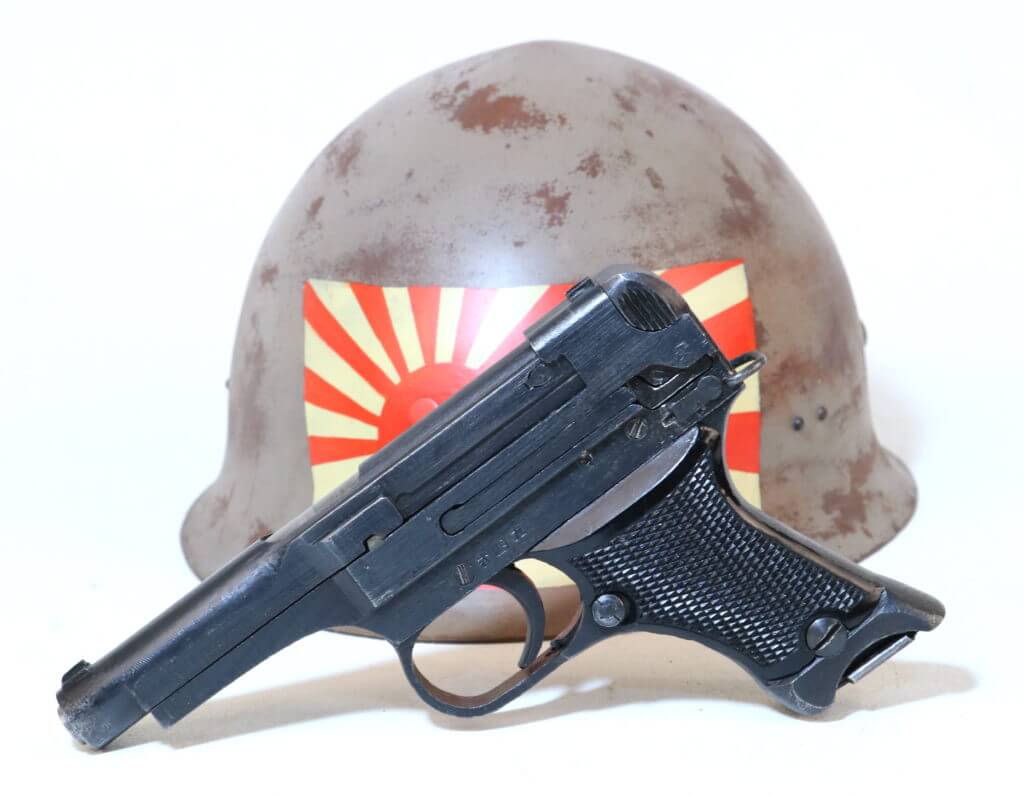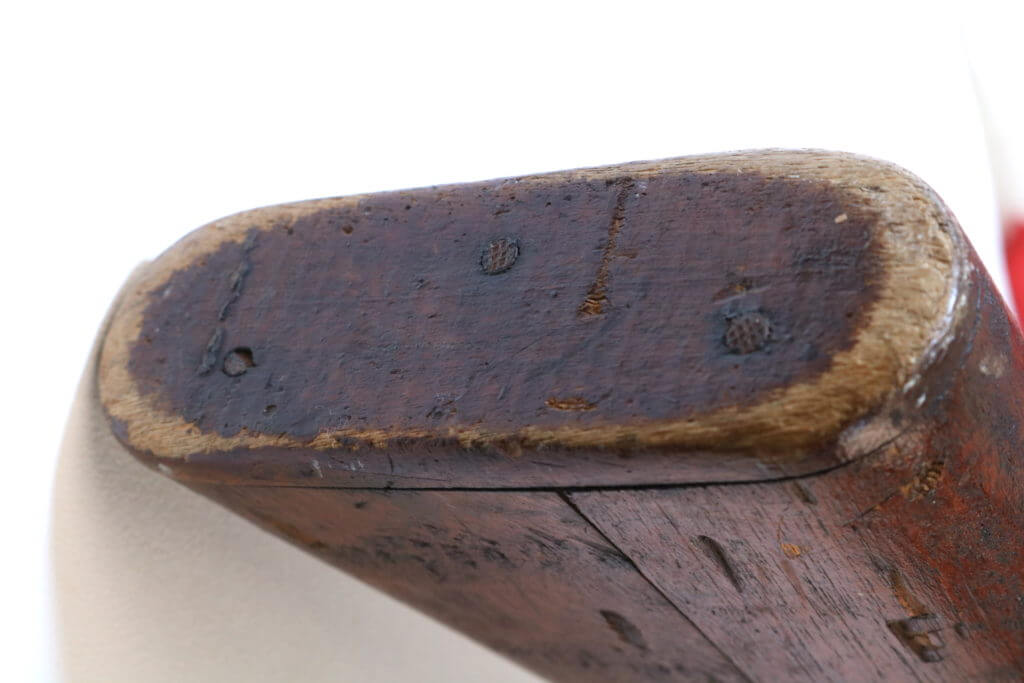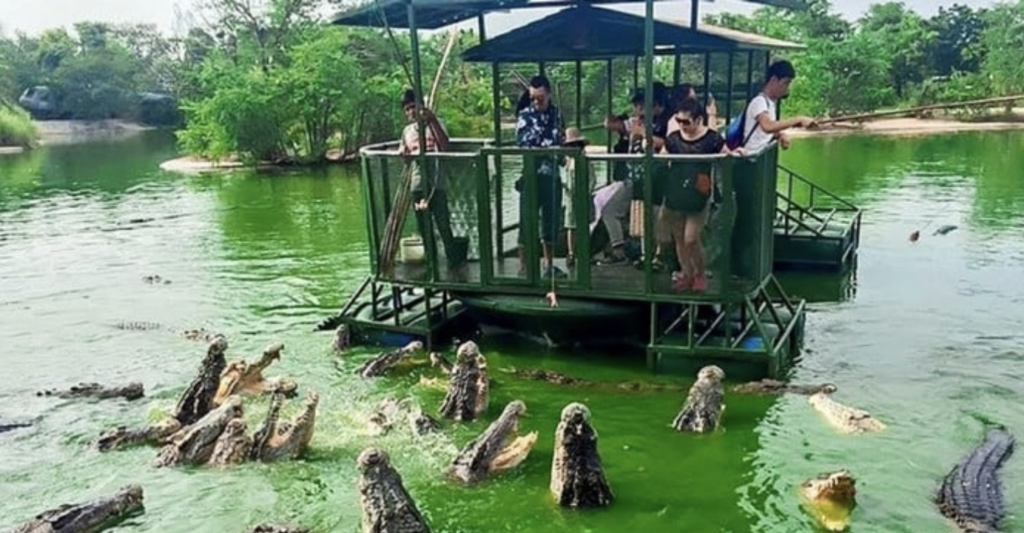
Everybody dies. That’s an easy thing to digest in the abstract. When you’re young, fit, and healthy it is often even comical. However, when the situation grows dire all that comedy is excised. Having seen my share I have been surprised at how many folks, even really old people, find the event so unexpected. Death is a big deal, and it warrants a little forethought.

The average life expectancy in America is 78.57 years. We all presume we will drift off quietly in our sleep and be too old to care. However, death comes for many in much darker more sordid ways.

There is little more viscerally horrifying than the prospect of being eaten alive. Getting gobbled up by some massive predator would actually likely be faster and less agonizing than a lot of the other alternatives. However, on a primal level, most folks just don’t want to end up as food. For several hundred Japanese grunts pulling garrison duty on an obscure island in the South Pacific in 1945, however, their gory demise was indeed extra horrible.
The Setting
The Imperial Japanese Army captured Ramree Island, a 520-square mile landmass off the coast of Rakhine State in what is today known as Myanmar, in 1942. The island is separated from the mainland by a narrow strait that averages a mere 150 meters across. For three years this Japanese garrison saw little to no action. In January of 1945, however, they would earn their combat pay.

In 1945 the garrison consisted of around 1,000 men assigned to the Japanese 54th Division and commanded by one Kanichi Nagazawa. On 21 January a flotilla containing the battleship HMS Queen Elizabeth, the escort carrier HMS Ameer, the light cruiser HMS Phoebe, and three British destroyers opened up on Japanese artillery positions established in caves overlooking the proposed landing beaches. This armada was supported by American B24 Liberators, B25 Mitchells, and P47 Thunderbolt fighter bombers.

By this point in the war, the Japanese were most typically staging their primary defenses inland in-depth, so the assault force landed essentially unopposed. The real chaos would come later. Two small craft struck mines, but the invasion itself was otherwise uneventful. As the Indian troops under Brigadier RD Cotterell-Hill advanced, however, the Japanese defenders put up a spirited fight.

A joint force comprised of Indian Infantry along with Royal Marines outflanked the Japanese positions, rendering them untenable. In response, the Japanese defenders fell back intending to join a second, larger element on the opposite side of the island. To do so, however, these battle-weary Japanese troops had to traverse 16 kilometers’ worth of fetid mangrove swamp.
Like a Bad Movie

By the time the Japanese defenders struck out into the swamp, the British had the entire area surrounded. Realizing the plight of the defenders to be hopeless, the British addressed the retreating men via loudspeakers entreating them to surrender. Alas, the Japanese during WW2 didn’t do a great deal of surrendering. The stage was set for Something Truly Horrible. A British soldier named Bruce Wright who later became a naturalist of some renown described the proceedings thusly—

“That night [of 19 February 1945] was the most horrible that any member of the M. L. [motor launch] crews ever experienced. The scattered rifle shots in the pitch black swamp punctured by the screams of wounded men crushed in the jaws of huge reptiles, and the blurred worrying sound of spinning crocodiles made a cacophony of hell that has rarely been duplicated on earth. At dawn the vultures arrived to clean up what the crocodiles had left….Of about one thousand Japanese soldiers that entered the swamps of Ramree, only about twenty were found alive.”
The Weapons

The Japanese fought World War 2 with what were arguably the best and worse Infantry weapons in the world. The Type 26 revolver and Type 94 pistol were inexplicably wretched. Though the Type 26 was meticulously well crafted, there was no positive cylinder stop to keep the cylinder properly indexed. Bumping the gun could rotate the cylinder such that the next shot might fall over an empty chamber.

The Type 94 is universally extolled as the worst combat handgun in military history. The grip tapers down so it feels like it is going to squirt out of your hand when you grasp it tightly. The magazine floorplate is not positively retained, so it can slip off and spill the contents of the magazine out of the butt. Most importantly, the transfer bar is exposed on the side of the gun. This means a good squeeze on the side will fire the weapon without the trigger having been touched. The same result can be elicited by setting the gun down vigorously on an uneven surface. Wow.

Japanese machineguns were heavy, reliable, and beautifully crafted. However, they used three different cartridges, two of which looked pretty much the same on the outside. The logistics of trying to keep all those guns fed across the vast Pacific theater would be unimaginably daunting. The Type 99 rifle, however, was a superb example of the military art.

In 1939 the Japanese designed a new bolt-action service rifle to replace the previous Type 38. They found that the 7.7x58mm Arisaka cartridge used in their machineguns was vastly superior to the 6.5x50mm round fired by the Type 38. The Imperial Japanese Army simply adapted the proven Type 38 design to fire the new round. Ultimately some 3.5 million copies were produced at nine different arsenals.

The Type 99 was produced in four distinct variants. The most common was the Type 99 Short Rifle. A limited production Type 99 Long Rifle was fielded as well. Additionally, there was a Type 99 Sniper variant equipped with a fixed-power optic. One version incorporated an offset optic mount and straight bolt handle that would accommodate stripper clips loaded from above. A second variant had a bent bolt and a centerline scope mount that necessitated rounds be loaded one at a time. There was a takedown paratrooper version of the basic rifle as well.

The Type 99 was the first mass-produced Infantry arm to include a chrome-lined bore for use in fetid jungle climes. Early versions of the Type 99 were meticulously executed with a variety of curious ditzels of dubious tactical utility. The first marks featured a pressed steel action cover, a flimsy folding wire monopod, and a bizarre antiaircraft sight with fold-out wings. This contrivance was intended to help Infantrymen on the ground determine proper lead for enemy aircraft crossing laterally. All of this stuff was deleted from production by the end of the war.

The safety on the Type 99 was a meticulously knurled knob located on the rear aspect of the bolt. To manipulate this device, one would press inward with the palm and rotate the knob 1/8 turn. This design seems clumsy when compared to the simple safety lever of the British Lee-Enfield or German Mauser designs.



As the war progressed and the full force of the massed B29 raids took their toll on Japanese industry the quality of the Type 99 rifle dropped off precipitously. These late-war versions were known as “last ditch” rifles. Such crude examples typically had no finish on the steel, rough tooling marks, and a simple fixed aperture rear sight. The oversized safety knob was left rough and unfinished, while the crude wooden buttplate was held in place via nails rather than screws. Many of these late-war rifles used a length of hemp rope in lieu of a sling as well.

Each Type 99 rifle included a chrysanthemum engraved on the receiver ring signifying personal ownership by the Emperor. Many to most examples sold today have had the mum ground off as a sign of respect for the defeated monarch. I have read that General MacArthur himself mandated this practice in an effort at smoothing out the occupation. Examples with intact mums command markedly higher prices as a result. Tests conducted by the NRA after the war comparing bolt-action rifles showed the Japanese Type 99 to be the strongest action used by any combatant nation during the conflict.
Aftermath

The numbers are disputed, but the generalities are reliable. The battle went on for six weeks. Of roughly 1,000 Japanese troops who retreated into the swamp, some 500 made it across the waterway to the mainland. Another 20 were captured. The rest were consumed by the island. Some likely succumbed to sharks while crossing to the continent, while others undoubtedly fell to British fire and disease. A not insubstantial number, however, were indeed eaten by crocodiles.

Around 1,000 people each year are estimated to succumb to crocodilians of all species today. The saltwater crocs endemic to Ramree Island in 1945 would have reached twenty feet or more and weighed some 2,000 pounds.

The Guinness Book lists the carnage in Ramree Island’s mangrove swamps as the worst example of crocodile predation on humans in history. There were 500 or so troops who remained unaccounted for that night. Theirs was an undeniably ghastly end.

Special thanks to World War Supply for the cool replica gear used in our photographs.